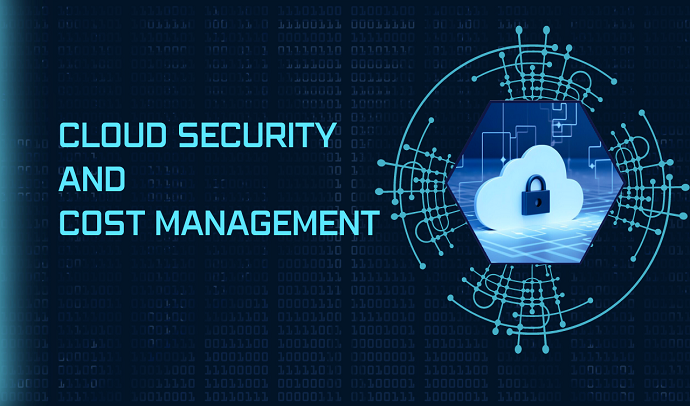Cloud Security and Cost Management: Achieving a Secure, Cost-Effective Balance
Introduction:

The rapid adoption of cloud computing has transformed the way organizations store, manage, and process data. While the cloud offers unparalleled flexibility and scalability, it also introduces challenges, particularly in the areas of security and cost management. Striking the right balance between security and cost-efficiency is a critical aspect of cloud operations. In this blog, we’ll explore the key considerations and strategies for achieving a secure, cost-effective equilibrium in your cloud environment.
The Cost of Neglecting Security:

Before diving into cost-effective security measures, it’s important to understand the consequences of neglecting cloud security:
- Data Breaches and Loss: Inadequate security can result in data breaches, which not only incur costs for remediation but can also lead to significant reputational
- Regulatory Fines: Non-compliance with data protection regulations can result in substantial fines. These penalties can quickly surpass the cost of robust security
- Operational Disruption: Security incidents can disrupt business operations, leading to financial losses due to downtime and service.
Strategies for Achieving a Secure, Cost-Effective Balance:

- Data Classification and Access Control: Classify your data based on sensitivity and access requirements. Implement fine-grained access controls to ensure that only authorized users can access sensitive data, reducing the risk of breaches.
- Cloud-Native Security Services: Leverage cloud service providers’ built-in security services. Cloud platforms offer tools for identity and access management, encryption, and threat detection, reducing the need for third-party solutions.
- Continuous Monitoring and Threat Detection: Implement continuous monitoring and automated threat detection. These services can identify and respond to security threats in real-time, reducing the impact and associated costs.
- Cost Allocation for Security Measures: Allocate a budget specifically for security. This allows you to plan and invest in the necessary security measures without disrupting other aspects of your cloud budget.
- Security Training and Awareness: Invest in security training for your team to enhance their awareness of security best practices. Well-trained personnel can reduce security incidents caused by human error.
- Cloud Cost Optimization for Security: Implement cost optimization strategies specifically for security. Regularly review security measures and consider whether they can be optimized for cost without compromising safety.
- Regular Compliance Audits: Conduct regular compliance audits to ensure that your cloud environment meets regulatory requirements. Identify and rectify non- compliance issues proactively.
- Data Encryption and Backup: Encrypt sensitive data at rest and in transit. Implement data backup and disaster recovery solutions to safeguard data against loss or corruption.
Conclusion:
Achieving a secure, cost-effective balance in the cloud is not a one-time effort but an ongoing process. It requires a proactive approach that considers both security and financial aspects. By investing in cloud security measures and integrating them into your cost management strategy, you can mitigate risks, reduce the potential for costly security incidents, and ultimately create a secure, efficient, and cost-effective cloud environment. Balancing security and cost management is essential for the long-term success of your cloud operations.
